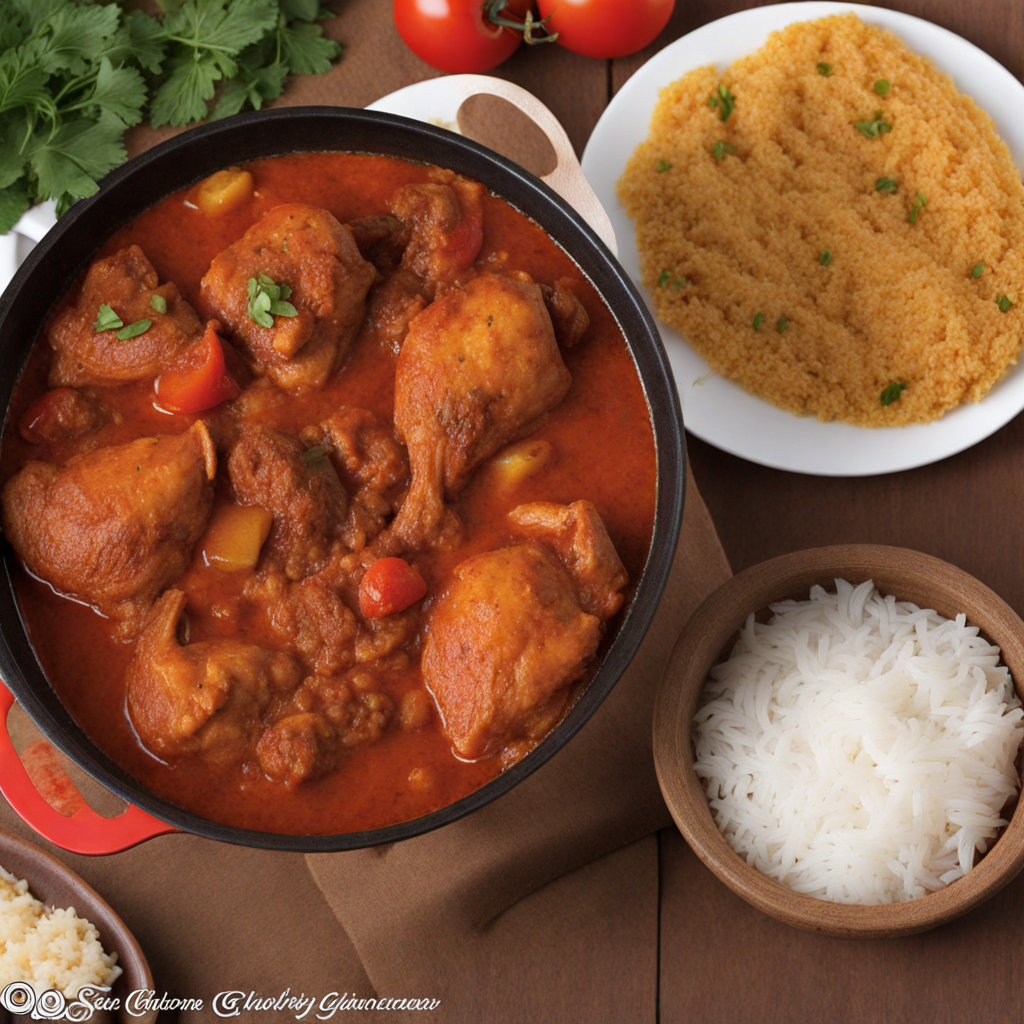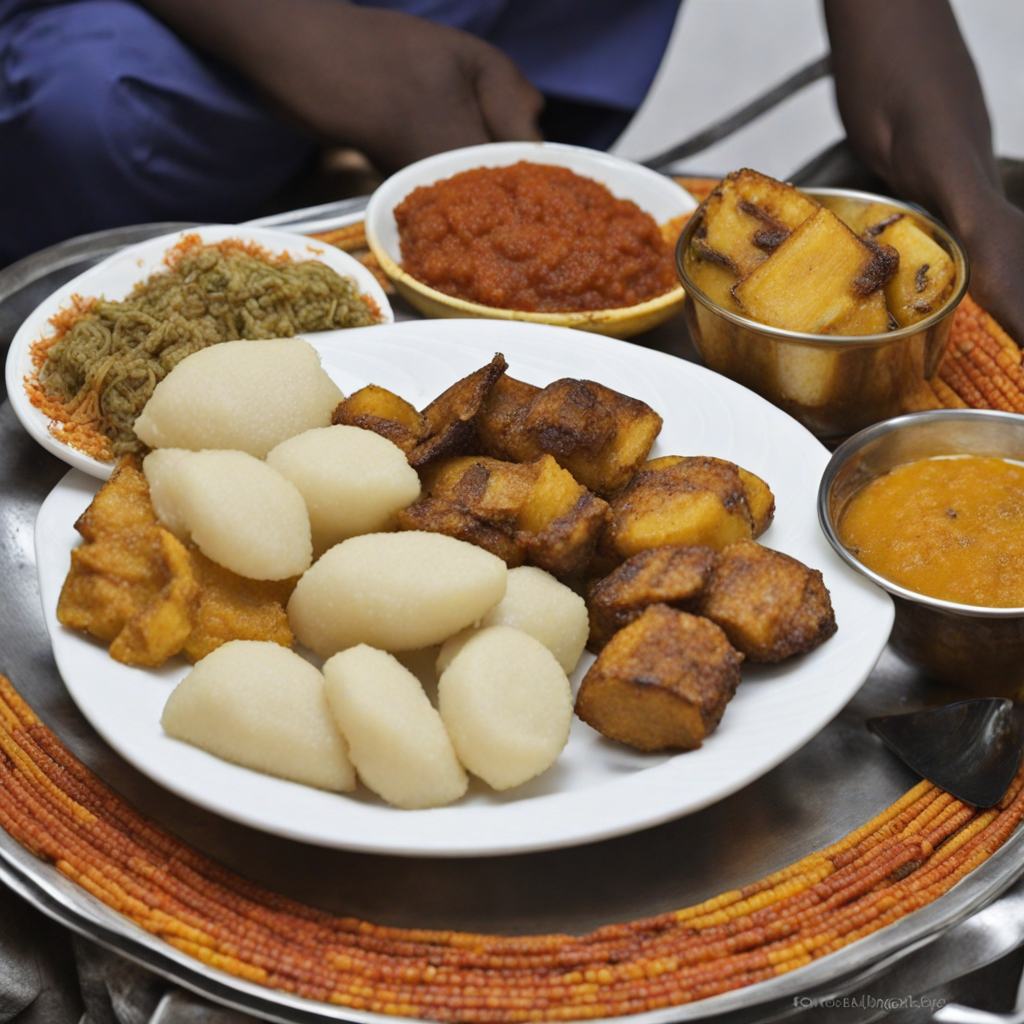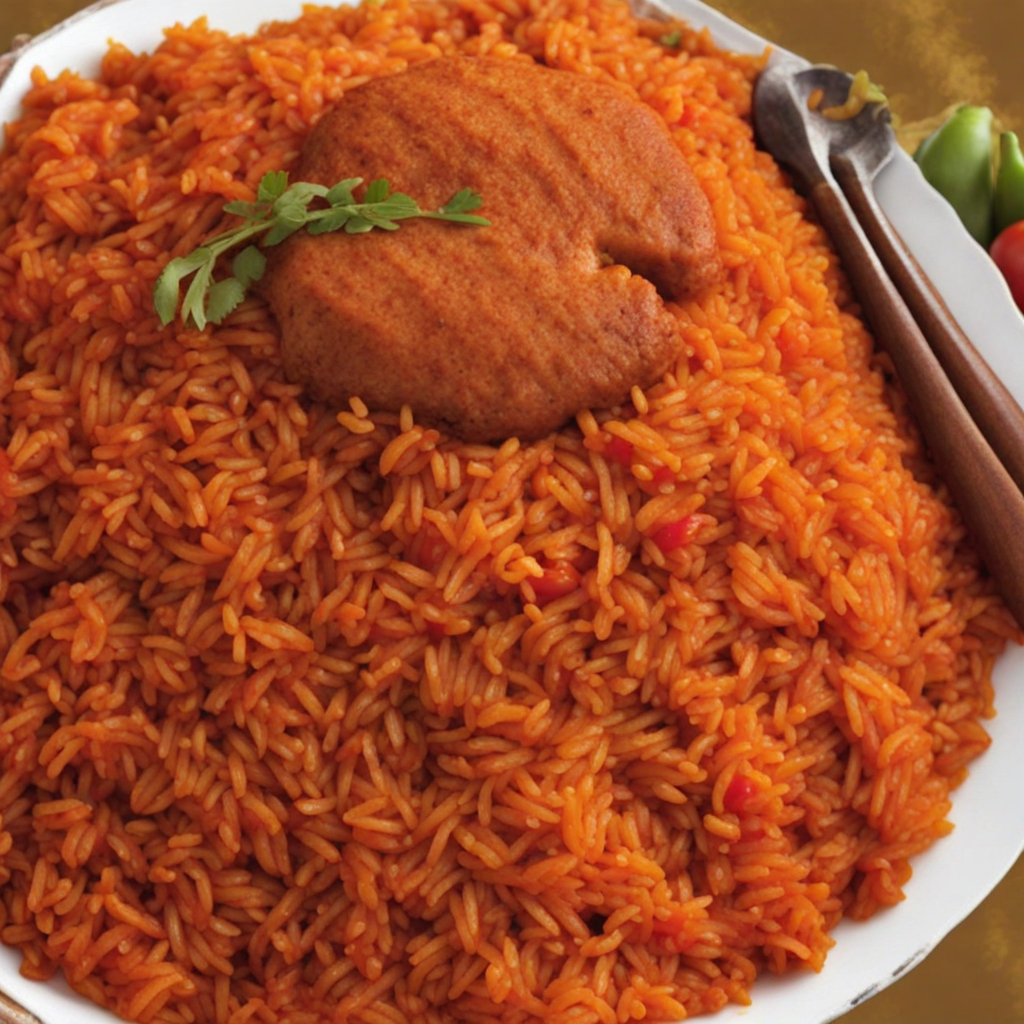Chicken Stew
Chicken Stew, a beloved dish from Ghana, is a vibrant and flavorful representation of West African cuisine. This hearty stew is typically crafted using tender pieces of chicken, marinated in an array of spices and seasonings that infuse the meat with rich flavors. The base of the stew often includes a medley of onions, tomatoes, and bell peppers, sautéed until they caramelize to create a robust sauce. The addition of local spices such as ginger, garlic, and sometimes chili peppers gives the dish a warm, spicy kick that tantalizes the taste buds and warms the soul. As the chicken simmers in the sauce, it absorbs the aromatic flavors, becoming succulent and juicy. The stew is commonly enriched with other ingredients like carrots and potatoes, which add a touch of sweetness and texture. The slow-cooking process allows the ingredients to meld beautifully, resulting in a dish that is both comforting and satisfying. Served hot, Chicken Stew is often accompanied by traditional staples like rice, fufu, or boiled plantains, which help soak up the delicious sauce. Beyond its delightful taste, Chicken Stew is deeply rooted in Ghanaian culture, often enjoyed during family gatherings and celebrations. Each region may have its unique twist, incorporating local ingredients or personal touches that showcase the diversity of Ghana's culinary landscape. This dish not only offers a delightful explosion of flavors but also an authentic experience of Ghanaian hospitality, making it a must-try for anyone looking to explore new culinary horizons.
How It Became This Dish
The Evolution of Chicken Stew in Ghana: A Culinary Journey Origins and Historical Context Chicken stew, or "Nkuto Nkyene" as it is known in some Ghanaian dialects, is a quintessential dish that reflects the rich culinary tapestry of Ghanaian culture. The roots of chicken stew can be traced back to the broader West African tradition of stews, which have been staples in the diets of the region for centuries. Early Ghanaians, like many other West African communities, relied heavily on locally available ingredients, including poultry, vegetables, and spices, to create hearty meals that were both nourishing and flavorful. The domestication of chickens in Africa dates back thousands of years, and these birds quickly became integral to various cuisines across the continent. In Ghana, chicken was not only a source of protein but also a symbol of wealth and status. Traditional ceremonies and festivals often featured chicken, making it a vital component in social gatherings. As trade routes expanded and influenced local diets, spices from the Sahel region and beyond began to permeate Ghanaian cooking, enhancing the flavors of dishes, including chicken stew. Cultural Significance Chicken stew holds a special place in Ghanaian culture, serving as a dish that transcends everyday meals. It is a common feature at celebrations, family gatherings, and communal feasts. The preparation of chicken stew is often a communal activity, bringing families and friends together in the kitchen. This act of cooking fosters social bonds and reinforces the importance of community in Ghanaian society. The dish is also associated with hospitality and generosity. In many Ghanaian households, offering a guest a bowl of chicken stew signifies respect and welcome. The stew is often served with rice, banku, fufu, or plantains, making it a versatile dish that can accommodate various preferences and dietary needs. Furthermore, chicken stew can symbolize cultural pride. The use of indigenous spices like ginger, garlic, and pepper creates a distinct flavor profile that is celebrated both locally and internationally. This dish is a testament to the culinary ingenuity of Ghanaians, showcasing how traditional ingredients can be transformed into a rich and satisfying meal. Ingredients and Preparation The preparation of chicken stew varies from region to region and household to household, but certain elements remain consistent. The base typically includes chicken, tomatoes, onions, and bell peppers, which are sautéed to form a rich, flavorful sauce. The addition of spices, such as thyme, curry powder, and chili, enhances the stew's depth, while a touch of palm oil or groundnut oil adds a luxurious finish. In many households, the chicken is marinated beforehand with a blend of spices and seasonings, allowing the flavors to penetrate the meat. This patience in preparation is reflective of the Ghanaian ethos, where the act of cooking is seen as an art that requires time and dedication. Development Over Time As Ghana has evolved, so too has the preparation and consumption of chicken stew. The colonial era introduced new ingredients and cooking techniques to the region, which influenced Ghanaian cuisine. The introduction of canned tomatoes and other processed foods made certain aspects of stew preparation more accessible, though traditional methods persist in many households. In contemporary Ghana, chicken stew has also adapted to modern dietary trends. With increased urbanization and a growing number of Ghanaians living in cities, quick and convenient recipes have emerged, often calling for pre-packaged ingredients. However, many still prioritize the traditional methods of preparation, emphasizing the importance of fresh, local produce. The diaspora has played a crucial role in the global recognition of Ghanaian chicken stew. As Ghanaians migrated to different parts of the world, they carried their culinary traditions with them, introducing chicken stew to new audiences. Restaurants and food festivals have emerged in places like the United States, Canada, and the UK, where Ghanaians showcase their culinary heritage. This international exposure has led to a fusion of flavors, as chefs experiment with local ingredients while maintaining the essence of the traditional dish. Modern Variations and Fusion In the 21st century, chicken stew has seen a resurgence in interest, particularly among food enthusiasts looking to explore global cuisines. This has led to innovative variations that incorporate elements from other culinary traditions. For instance, some chefs have introduced coconut milk, inspired by Southeast Asian cooking, resulting in a creamier version of the stew. Others experiment with different protein sources, such as guinea fowl or even vegetarian options, using mushrooms or tofu to create a plant-based alternative. Moreover, the rise of social media and food blogs has allowed home cooks and chefs to share their unique takes on chicken stew, leading to a vibrant online community dedicated to Ghanaian culinary traditions. Video tutorials and recipe sharing have made the dish more accessible, encouraging a new generation to embrace their heritage through cooking. Conclusion Chicken stew is more than just a meal; it is a narrative of Ghana's history, culture, and community. From its humble origins to its present-day variations, the dish encapsulates the resilience and adaptability of Ghanaian cuisine. The communal act of preparing and sharing chicken stew fosters connections among people, reinforcing the values of hospitality and generosity that are central to Ghanaian culture. As we look towards the future, chicken stew will undoubtedly continue to evolve, influenced by globalization and changing culinary trends. Yet, its core essence—the melding of simple ingredients into a comforting and flavorful dish that brings people together—will remain steadfast. The evolution of chicken stew in Ghana is a testament to the enduring nature of food as a cultural cornerstone, illustrating how culinary traditions can adapt and flourish while maintaining their roots.
You may like
Discover local flavors from Ghana







